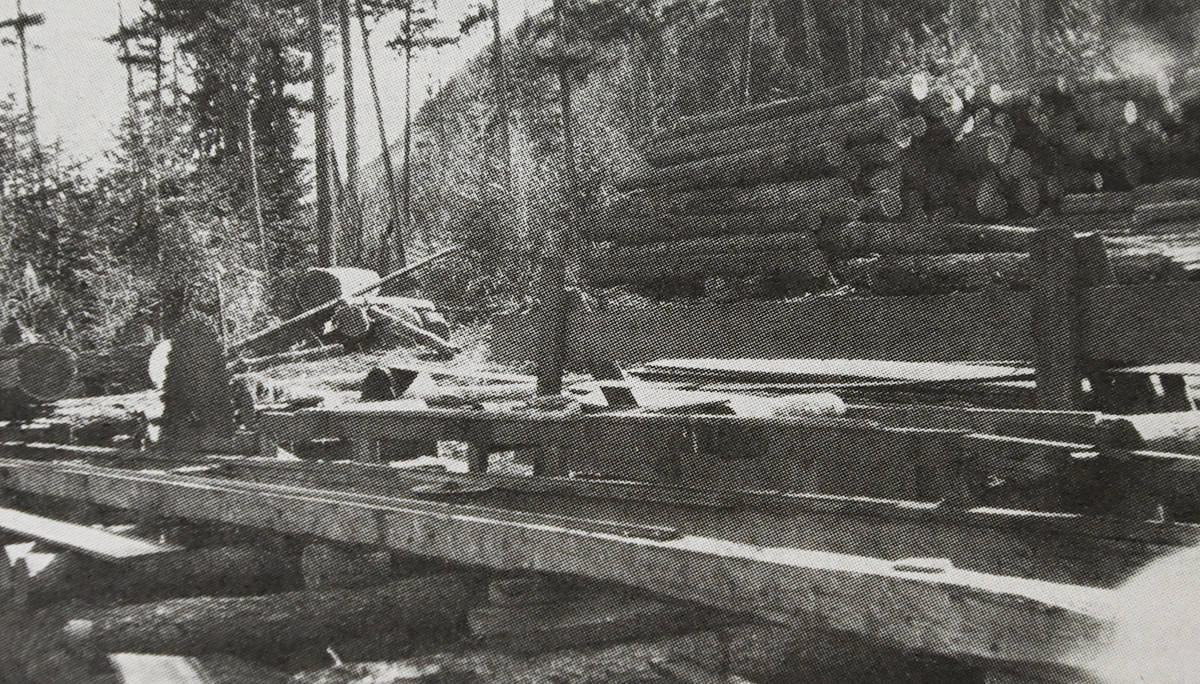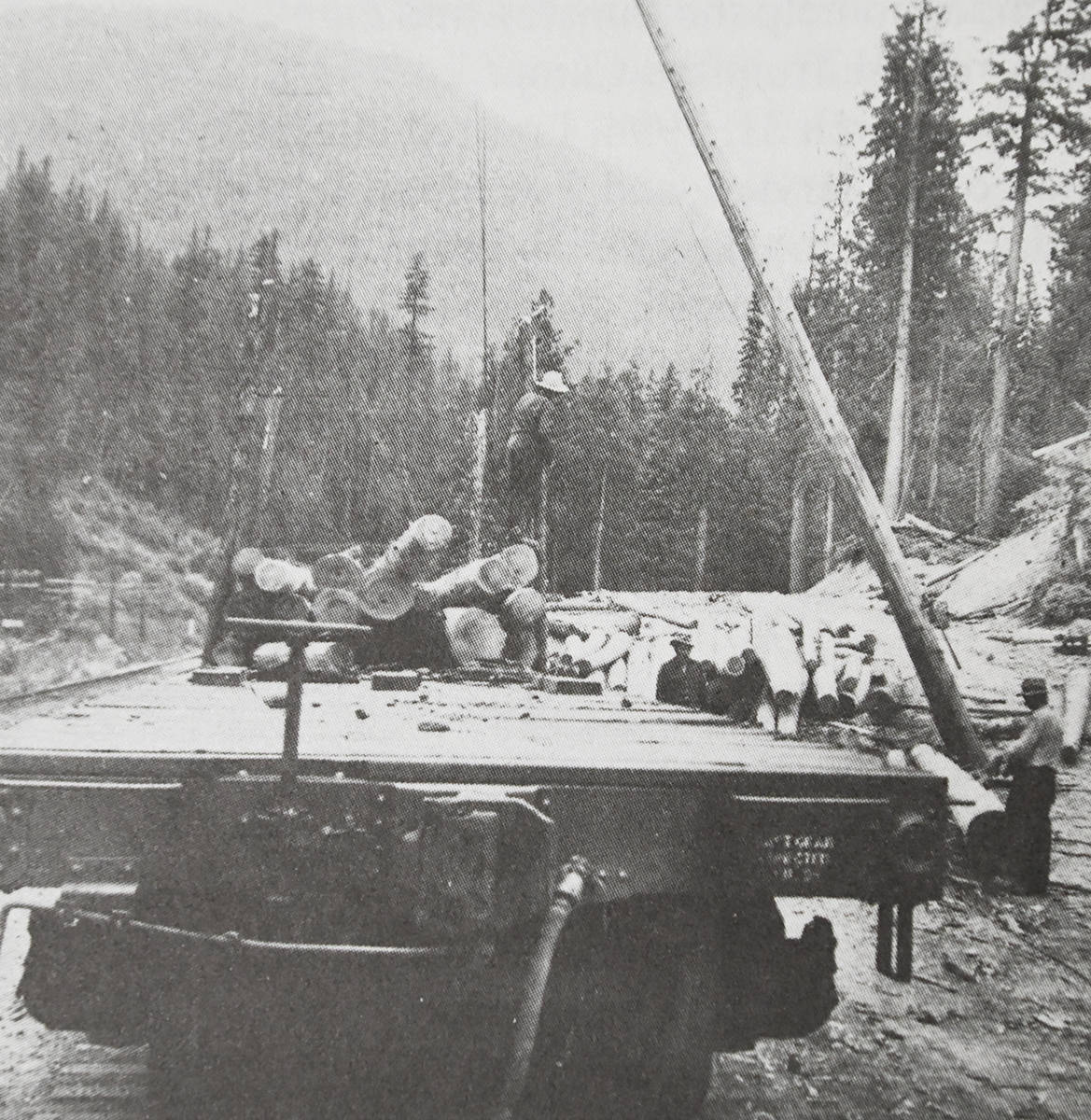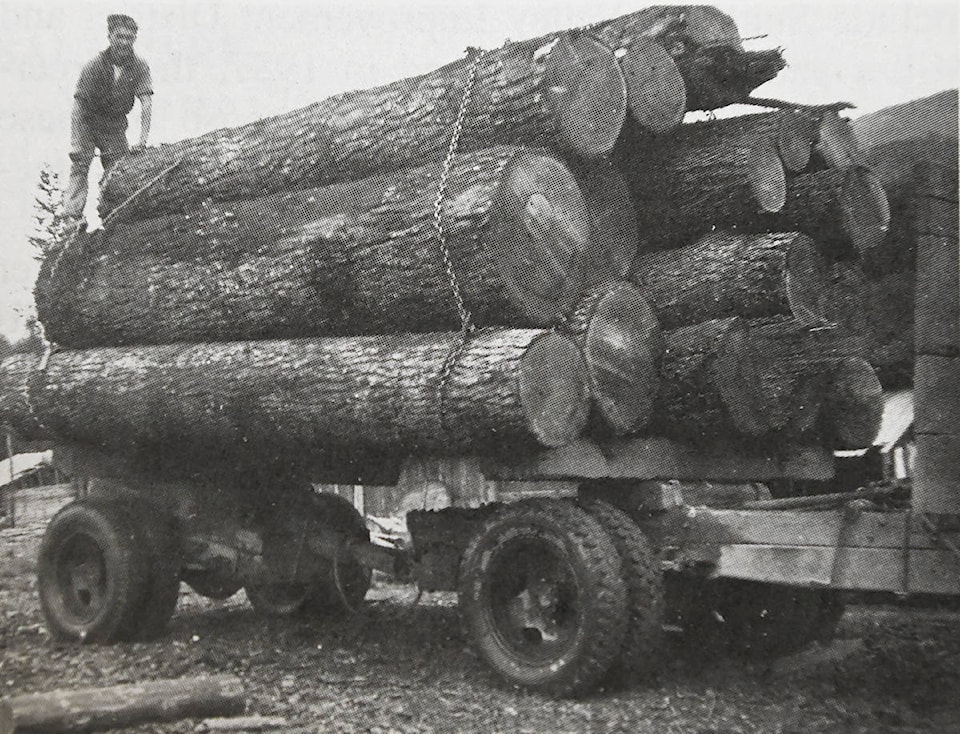The following is an excerpt from Upper North Thompson Reflections
By M.E. (Mel) Monteith
The workload was changing for the Ranger staff. More timber sales were required, and in the Lands area pre-emptions declined but applications to puchase greatly increased. Private land still supplied the largest amount of scaled volume in the province, with timber licenses and timber sales next-highest.
In 1947, the Clearwater Ranger Station was discontinued. R.C. Hewlett was ranger in Birch Island and D.P. (Don) Fraser in Blue River. This year, a residence office/warehouse were built in Birch Island. The road toward Dawson Falls was started.
Forest legislation was passed for the creation of Forest Management Licenses. This would open the way for a future application of the management license at Clearwater. In this area, timber sales produced the highest log volume of all tenures.
Private land still supplied 30 per cent, while timber sales supplied 60 per cent.
There were no great changes in the Forest Service in 1948. Provincially, a section called Parks and Recreation was established. The new rangers in the North Thompson were H.W. (Huntley) Campbell in Birch Island and C.M. Yingling in Blue River. Establishing a Parks organization took some priority this year.
In 1949, a full-time ranger, L.E. (Les) Cook, was appoonted to Wells Gray Park. Campbell and Yingling maintained their ranger positions. The packhorse bridge over the Murtle River at the Mushbowl was replaced with a motor-vehicle bridge. This year, the construction of an office/warehouse was completed in Blue River. This building is still there.
Ranger staffs were relieved of much of the land inspection work with the appointment of Lands Branch Inspectors. Logging on private land, however, was still checked by the Forestry.
A jeep road was started from the Murtle River crossing toward Clearwater Lake in 1950. Cook was the park ranger, with Campbell in Birch Island and A.C. Schultz in Blue River.
In the ranger districts, timber sale cruising and logging inspections were taking priority, although if a fire was reported, all other activities were suspended! Land inspections, which had been a priority in the past, were slowly being taken over by land inspectors.
Concern regarding trespass timbercutting was increasing, and the Kamloops Forest District had 76 cases covering over 1,000 acres.
The fire season of 1951 was very severe. The Forest Service employees in Wells Gray Park, as elsewhere, were stretched to the limit. No other work was done in the park during that time, due to the extreme fire season.
A biologist joined the Parks division to conduct wildlife research. He worked in both Manning and Wells Gray Park. Ralph Ritcey studied the moose population in Wells Gray Park with the help of ranger staff and much work was accomplished.
The ranger staffs in Blue River and Birch Island continued looking after logging operations when not fighting fires. Campbell was still ranger in Birch Island and A.G. Cameron was the new ranger in Blue River. A new ranger residence was completed in Blue River and this house is still there.
I consider 1952 a good year as that was the year I started with the Forest Service and was stationed in Wells Gray Park! Cook was still ranger and Ritcey was appointed full-time biologist.
It was quite an eventful year in Wells Gray. Construction of the road toward Clearwater Lake continued and a new ranger office and residence were started at the park entrance.
For the first time, a hunting season on cow moose was allowed.


